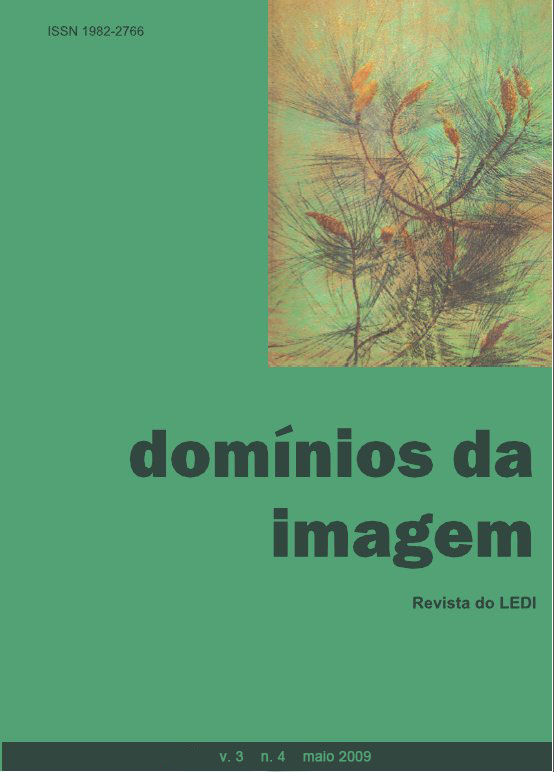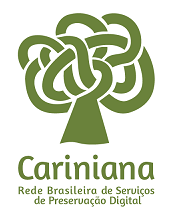The Byzantine icon and the production of meaning in Ukrainian Orthodox immigrants
DOI:
https://doi.org/10.5433/2237-9126.2009v3n4p107Keywords:
Byzantine icon, Orthodox Church, The production of sense.Abstract
This article examines how the iconographic image in Ukrainian Orthodox Church was seen and used in daily life of immigrant families Ukrainian in Papanduva - SC, city located in northern Santa Catarina, Brazil. The Orthodox Church is in the city since 1931 and it was the institution of training and regulatory forms of life within the family, homes, neighborhoods, and this was linked to the power of image and image of the power of this religious institution. For analysis, i reflect on categories of identity and image where you can understand cultural and religious buildings. The analysis of speech, in view of the construction of subjectivities, helps in the understanding of how the group of immigrants made for you the self-image.Downloads
References
CERTEAU, Michel de. A invenção do cotidiano. Tradução de Ephraim Ferreira Alves. Petrópolis, Rio de Janeiro: Vozes, 1994.
CHARTIER, Roger. Entrevista a Isabel Lustosa. RJ: Casa Rui Barbosa. Mimeo, 2004.
CHARTIER, Roger. A História Cultural: entre práticas e representações. Lisboa: DIFEL; Rio de Janeiro: Bertrand Brasil, 1990.
CLEMENT, Olivier. Fontes. Os místicos cristãos dos primeiros séculos. Juiz de Fora: Subiaco, 2003.
DEBORD, Guy. A sociedade do espetáculo: Comentários sobre a sociedade do espetáculo, Rio de Janeiro: Contraponto, 1997.
DURKHEIM, Èmile. As formas elementares da vida religiosa: o sistema totêmico na Austrália. São Paulo: Ed. Paulinas, 1989.
ELIADE, Mircea. Imagens e símbolos: ensaio sobre o simbolismo mágico-religioso. São Paulo: Martins Fontes, 2002.
ELIADE, Mircea. O sagrado e o profano. São Paulo: Martins Fontes, 1999. EL HAJ, Georges. A Igreja Ortodoxa no mundo. Rio de Janeiro: Aurora, 1971.
EVDOKIMOV, Paul. Teologia da Beleza: a arte do ícone. Milano: Mondadori, 1990.
FOERSTER, Heinz von. Visão e conhecimento: disfunções de segunda ordem. In: SCHNITMAN, Dora Fried (org). Novos paradigmas, cultura e subjetividade. Porto Alegre: Artes Médicas, 1996.
MENESES, Ulpiano T. Bezerra de. Rumo a uma "história visual". In: MARTINS, José de Souza; ECKERT, C.; NOVAES, S. C. (orgs.). O imaginário e o poético nas ciências sociais. Bauru: EDUSC, 2005.
MONTEIRO, Guadalupe Vargas. Cosmogonia, mentalidad y región. In: DEMBICZ, Andrzej. (editor) Interculturalidad en América Latina en âmbitos locales y regionales. Warszawa: CESLA, 2004.
OLIVEIRA, Roberto Cardoso de. Identidade, etnia e estrutura Social. São Paulo: Pioneira, 1976.
SEMPRINI, Andréa. Multiculturalismo. Trad. de Laureano Pelegrin. Bauru: EDUSC, 1999.
SPERANDIO, Pe. André. Sacerdote Ortodoxo. Entrevista cedida em 20 de junho de 2008. Acervo do autor.
VOVELLE, Michel. Imagens e imaginário na história: fantasmas e certezas nas mentalidades desde a Idade Média até o século XX. São Paulo, Ática, 1997.
WOODWARD, Kathryn. Identidade e diferença: uma introdução teórica e conceitual. In: SILVA, Tomaz Tadeu. Identidade e diferença. Petrópolis: Vozes, 2000.
Downloads
Published
How to Cite
Issue
Section
License
Copyright (c) 2009 Domínios da ImagemDomínios da Imagem adopts the Creative Commons Attribution 4.0 International License, therefore, the copyrights related to the published articles belong to the author(s), who grant the journal the exclusive right of first publication.
Under this license it is possible to: Share - copy and redistribute the material in any medium or format. Adapt - remix, transform, and build upon the material, giving due credit and providing a link to the license and indicating if changes were made.












 The works in this journal are licensed under Creative Commons .
The works in this journal are licensed under Creative Commons .